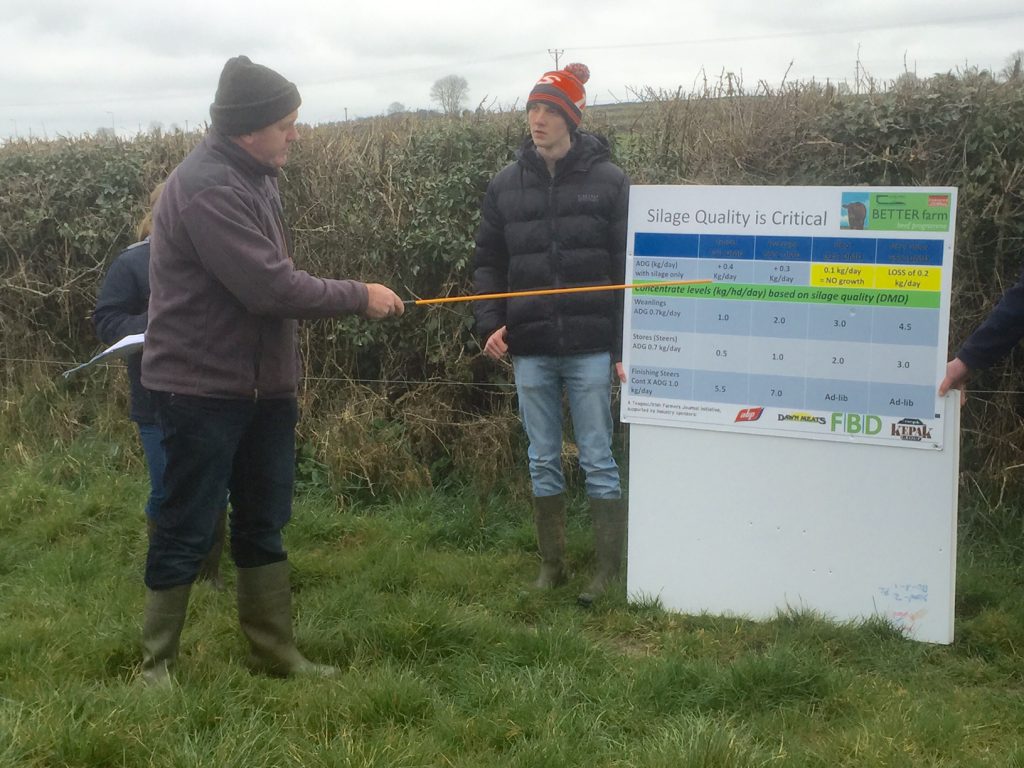Beef farmers can save €72 on the cost of keeping weanlings over the winter, by increasing the quality of the silage they make, according to Teagasc’s Michael Daly.
Silage quality can have a big impact on animal performance and the profitability of beef farming systems, he said.
“The margins in beef are tight and farmers should avoid feeding extra meal to compensate for poor quality silage,” Daly said.
Speaking at a recent farm walk in Roscrea, Co. Tipperary, the Teagasc Drystock Advisor said that farmers should aim to make silage with a Dry Matter Digestibility (DMD) of 70%+.
Daly said it will cost farmers an additional €72/head to feed weanlings over a 120-day winter when silage quality is low (62% DMD), mainly due to a higher concentrate requirement.
He also said that these animals will spend longer on the farm, due to lower growth rates associated with poor quality silage.
When the silage quality is good (72% DMD), he said that the animals will need less meal and will also have a shorter finishing period.
He said that the majority of the €72/head saving comes from a reduction in meal costs, as cattle fed 72% DMD silage will only need 1kg of meal per day. However, cattle on poor quality (62% DMD) silage will require 3kg of meal each day.
Silage quality – 72% DMD
Silage quality – 62% DMD
Teagasc’s Michael Daly speaking at the farm walk. The farm walk was hosted by Tim Meagher, a suckler-to-beef farmer in Roscrea, Co. Tipperary.
Meagher runs a herd of 70 autumn-calving suckler cows, with all the bull calves brought to beef as 16-month bulls. He also purchases 110 steers every year for further feeding and finishing on the farm.
Meagher said that high quality silage is important for the cattle on his farm, as he wants the animals to perform to the highest levels at the lowest cost.
Over the past two years, he said that average silage had a DMD of 72-73%, which he said was necessary to keep the winter feeding costs down.
One of the key steps Meagher takes in making high quality silage is cutting the crop before the seed head appears. He said that he targets a silage cutting date of May 18 on for this reason.
I am not looking for big yields. Most of the cuts are about 9-10t. Another area where he has improved the quality of the silage he produces on his farm is by grazing the over-winter growth prior to letting the field out for silage. Teagasc research shows that failing to graze a sward prior to closing it for silage reduces the DMD levels of the silage by 6-7%.
“I graze the fields before we let them out for silage. This year I zero-grazed the silage ground to remove the dead material that had grown over the winter,” he said.
Meagher also said that he tries to ensure that the crop is wilted before bringing it in and putting it in the silage pit. This increases the concentration of sugar in the silage, which aids preservation.
To ensure that the silage is wilted, he turns the grass crop twice prior to picking it up and putting it in the pit.
Meagher also spreads 100 units of Nitrogen per acre of his silage swards to ensure that there is adequate grass growth. He said that about 18 of this Nitrogen units comes from slurry, which is spread on the paddock that has been grazed.

How to make quality silage





